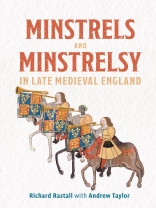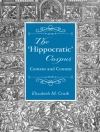A major new study piecing together the intriguing but fragmentary evidence surrounding the lives of minstrels to highlight how these seemingly peripheral figures were keenly involved with all aspects of late medieval communities.
Minstrels were a common sight and sound in the late Middle Ages. Aristocrats, knights and ladies heard them on great occasions (such as Edward I’s wedding feast for his daughter Elizabeth in 1296) and in quieter moments in their chambers; town-dwellers heard and saw them in civic processions (when their sound drew attention to the spectacle); and even in the countryside people heard them at weddings, church-ales and other parish celebrations. But who were the minstrels, and what did they do? How did they live, and how easily did they make a living? How did they perform, and in what conditions? The evidence is intriguing but fragmentary, including literary and iconographic sources and, most importantly, the financial records of royal and aristocratic households and of towns. These offer many insights, although they are often hard to fit into any coherent picture of the minstrels’ lives and their place in society. It is easy to see the minstrels as peripheral figures, entertainers who had no central place in the medieval world. Yet they were full members of it, interacting with the ordinary people around them, as well as with the ruling classes: carrying letters and important verbal messages, some lending huge sums of money to the king (to finance Henry V’s Agincourt campaign in 1415, for instance), some regular and necessary civic servants, some committing crimes or suffering the crimes of others. In this book Rastall and Taylor bring to bear the available evidence to enlarge and enrich our view of the minstrel in late medieval society.
สารบัญ
Part I. Minstrels and Minstrelsy in the Elite Households
1 The royal households and their minstrels
2 The life of a royal minstrel
3 Recruitment, training and retirement
4 Minstrelsy at Court
5 Minstrelsy in noble and ecclesiastical households
Part II . Urban Minstrelsy
6 Minstrelsy in the towns
7 Civic minstrels
Part III. On the Road
8 Minstrels on the road
9 Minstrel itineraries
10 The regulation and protection of minstrels
Part IV . Minstrel Performance
11 The enigma of the minstrels’ songs
Andrew Taylor
12 Professional recitation before the fourteenth century
Andrew Taylor
13 Minstrels and heralds and chivalric fame
Andrew Taylor
14 Instruments and performers
15 The instrumental repertory in England
Envoi
Bibliography
Index
เกี่ยวกับผู้แต่ง
ANDREW TAYLOR is Professor of English at the University of Ottawa.












